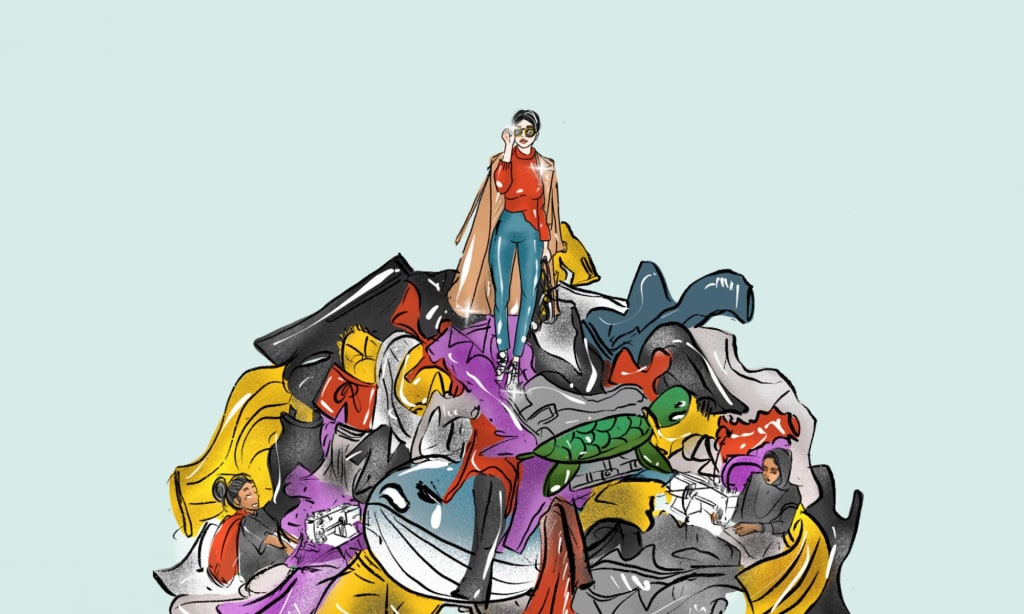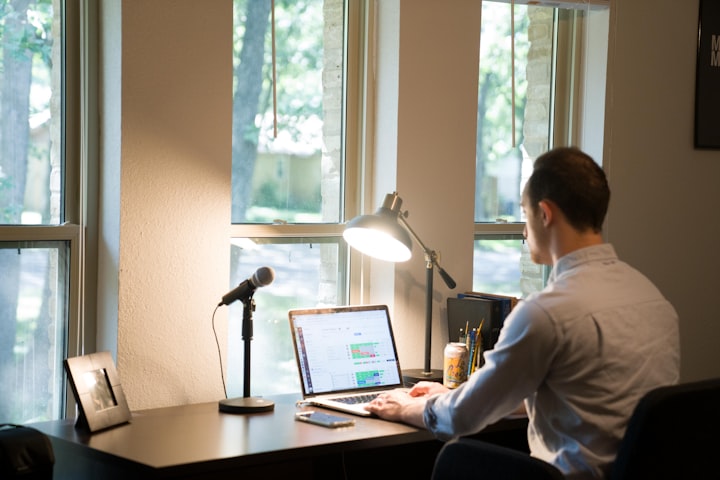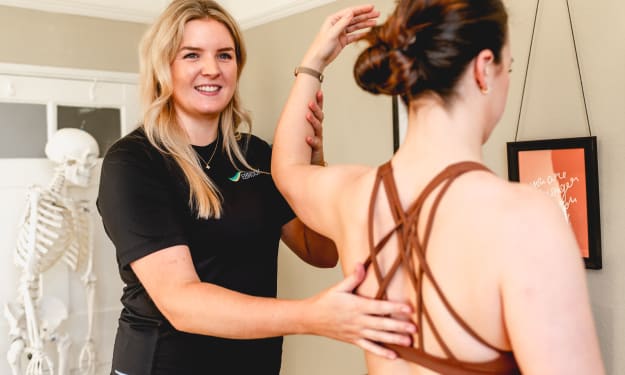I Bought No New Clothes For a Year, This Is What Happened
The UK is the 4th largest textile waste producer in Europe, with 3 out of 5 fast fashion items ending up in landfill or burnt (yes, even your returns). Fast fashion is not sustainable, with the environment and garment workers paying heavily for it. So, I challenged myself to buy no new clothes for a year to reflect upon my own contributions to this crisis

Buying no new clothes for a year may not seem like a grand feat for a lot of people. This actually may be your norm. However, at the end of 2019, I found I had spent on the order of £500 just on clothes from fast fashion websites. This was around 3 - 4 items per month (remember when we had reasons to buy clothes?) and I can’t recall any being that remarkable. These were only the clothes I had kept, compared to the many I also returned.
30,000 litres (8,000 gallons). This is the amount of water it takes to make a single leather jacket.
Fast fashion companies, most of which are popular online and high-street stores such as Zara, H&M, Boohoo, PrettyLittleThing, and Missguided to name a few, run on the model of creating affordable fashion with a high product turnover. It feels like an absolute steal to wear the same dress as a Kardashian for 1% of the price. However, the immense pressure to turn around new styles every single day is severely costing our planet and garment workers. The fashion industry is responsible for 10% of the world’s carbon emissions and 93% of brands are not even paying garment workers a living wage. Burning and sending unsold stock and returns to landfill is now the most cost-effective way to maintain a brand’s exclusivity. Suddenly seeing a PrettyLittleThing bodycon dress for £5 starts to make you feel a little nauseated.
These revelations were an eye-opener. I realised I had a responsibility in extending the lifespan of the many clothes I already owned and to dampen my impulses on buying new ones to stop my contribution to an unethical industry. I needed to do my part to stop further perpetuating the fast fashion cycle for the sake of cute Instagram photos in a (pretty average) jumpsuit.
I challenged myself to buy no new clothes unless I was going to wear them more than three times a week. The verdict? I bought a couple of sweatshirts in February (after selling two other items on eBay), which I have worn to death in the many lockdowns (thanks 2020...), and that was it. I subsequently ended up also not buying jewellery, shoes, bags, or coats since these just made no sense without any cute new outfits.
No monkey see, no monkey do
I began by starving off any impulses by first tackling the marketing I gave heavily into. My prime method of buying clothes from online stores was from promoted adverts on Instagram showing suggestions that were based on previous searches. There are some very clever people behind this technology and they are paid well to tap into your weaknesses and use your data to provide exactly what you’re looking for. Just ignoring adverts wasn’t going to be enough, I had to disable them. I went on to unfollow all clothing websites from all social media. You can’t miss the perfect dress at the perfect price if you didn’t know it existed in the first place!
I currently feel no impulse to go back to following fashion websites on social media after having been away from it for so long. I feel more free to choose what to buy of my own accord on any website, only if I am looking an item of clothing in particular. Now I make sure to check how ethical a brand is, on the Good On You directory for their impact on the planet, people and animals.
Making my clothes last
Secondly, I began to wear clothes in my wardrobe I had forgotten about. Some items have unexpectedly become personal favourites (jumper too big = jumper very comfy) and others which my friends genuinely thought were brand new after seeing them for the first time. Wearing the clothes you already have is by far the most sustainable fashion option. Saying that, sizes change, styles change and clothes do become worn out. I began to style some clothes differently to adjust to this, and ended up mending older clothes (come on, you can sew on a button) to pull them together a little longer.
Even now, there are still some clothes that I have no idea why I ever bought and have never worn. In 2021 onwards, I have made the choice to only buy new clothing (still avoiding Boohoo, Missguided etc. as much as possible) only if I have sold an unwanted one already. Depop, eBay and Vinted have been incredible for buying and selling second-hand clothing, many of which have still got tags on. It is not just sustainable, but much more affordable too.
Making my own clothes
This may not be everyone's cup of tea, so feel free to skip this section if so.
Before, it was of course much easier to just buy a jumper I particularly liked than to try make my own, even if I was interested in doing so. With a busy work schedule and a (past) social life, weekend after weekend passed by and I just did not have the motivation and diligence to start learning.
I've dabbled with knitting as a hobby since I was at sixth form college and I personally find quite challenging to this day. However, it's pretty much cold in the UK most of the year and shivering into April, I was running drastically low on jumpers. This was a bit of a pickle in a year when I chose not to buy any new ones.
With lockdowns, revisiting knitting came naturally for me to make, voila, new jumpers and cardigans and really forced me to give the hobby another try. I've ended up learning to crochet too, which I find a heck of a lot easier personally, all from Youtube. I'm proud to finally be learning a new skill that I've grown to love and I now have many more projects in the future to look forward to. The secret of getting ahead really is getting started!
This challenge may be a bit drastic for fellow clothes lovers, and I'm not going to lie, it was very tempting at times to give in and buy that pretty winter coat. However, it's important to start somewhere. Try cutting down to one item a month, only buying as many clothes as you sell, purchasing only from sustainable brands or only buying clothes after you've made one yourself (if that's your thing). Supply is only going to respond to demand. A dress made by someone that's paid a fair wage and uses natural materials? Now that, would look good on you.
About the Creator
AV
A whole lot of thoughts structured into blog posts
Instagram: @_instashika






Comments
There are no comments for this story
Be the first to respond and start the conversation.